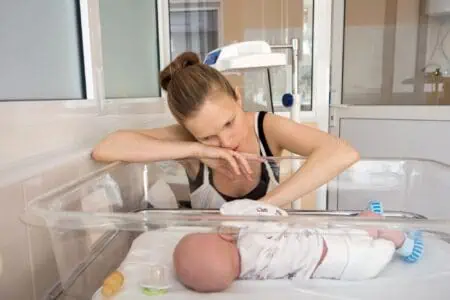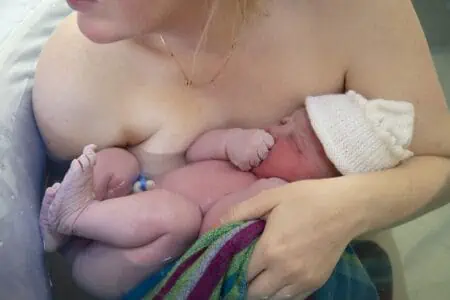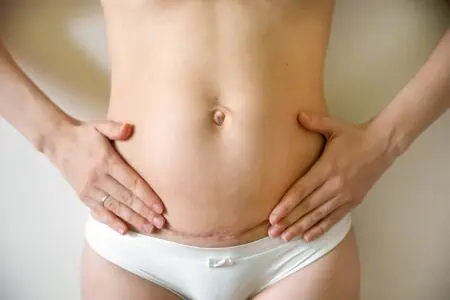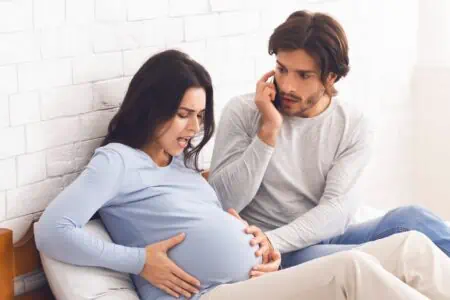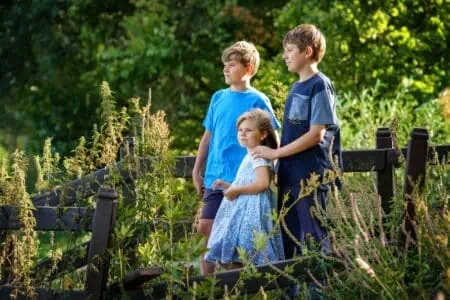We dug into the data, lawsuits, and real-life stories to separate fact from fiction. Is this an urban legend, or is it a genuine risk in modern hospitals?
Here is the lowdown on the frequency of mix-ups, heart-wrenching true stories, and the protocols hospitals use to ensure you go home with the right baby.
How Many Babies Are Switched at Birth?
Pinning down an exact number is tough because concrete data is scarce. A widely circulated report from 1998 claimed around 28,000 babies were switched at birth in the U.S. annually (1). While that number is shocking, it includes temporary mix-ups where the mistake was caught before the family left the hospital.
More recent data paints a calmer picture. Another report identified only eight “serious” mix-ups, where babies went home with the wrong families, between 1995 and 2008 across the U.S. Thanks to modern technology and strict tagging protocols, long-term swaps are now incredibly rare.
Statistics and Facts About Baby Swapping
Curious about the numbers behind the headlines? We compiled the most fascinating facts, stats, and consequences regarding hospital mix-ups.
Prevalence of Baby Swapping
Here is a look at how often this actually happens in the U.S. and abroad.
- Serious cases are rare: While thousands of minor errors may occur, recorded instances of babies actually going home with the wrong parents are minimal. Only eight serious cases were reported in the U.S. over a 13-year period.
- The “Nurse Tiger” incident: In 1960s Canada, a nurse known as “Nurse Tiger” caused multiple switches (2). Frustrated with her aide for banding babies immediately, she ordered bands to be attached later. This delay led to significant mix-ups after mothers and babies had already been separated.
- Twin mix-ups are tricky: It is difficult to track how often twins are swapped with each other or singletons (3). Estimates suggest between 20,000 and 23,000 “misplacements” happen annually in the U.S., such as bringing a baby to the wrong room, though these are usually fixed instantly.
- UK hospitals see zero cases: A 2017 report from the UK found no instances of babies being sent home with the wrong family between 2011 and 2015 (4).
- No mandatory reporting: No federal law requires U.S. birthing facilities to report switching mistakes (5). This lack of transparency makes it hard to create exact statistics.
- Temporary swaps happen: Some older findings suggest a startling one in four babies might be temporarily handed to the wrong parent during their hospital stay (6). However, identifying bands usually correct this immediately.
Real-Life Cases and Stories
Even with safety nets, human error exists. Here are eight true stories where families faced the unthinkable.
- A 2021 mix-up: In January 2021, April Sifiata received the wrong baby at a Philippine hospital (7). Despite her immediate protests, the staff discharged them. A DNA test eventually proved zero maternity probability. The family had to track down another couple from the ward to prove the switch and reunite with their biological son.
- Czech Republic swap: In 2007, two girls were switched and raised by the wrong families for 10 months (8). Suspicions arose only because one daughter bore no resemblance to her parents. After DNA confirmation, the couples swapped the children back.
- The 28-year twin secret: Identical twins Begona and Delia were born in the 1970s, but Delia was accidentally swapped with a baby named Beatriz (9). Decades later, a store clerk mistook one for the other. This chance encounter led to a meeting and DNA tests that reunited the biological twins.
- AncestryDNA surprise: Raylane Amaral discovered at age 28 that she was switched at birth (10). The complexity deepened when tests showed she wasn’t related to the mother who raised her, nor the woman she suspected was her biological mom, implying a three-way switch occurred.
- The Kimberly Mays case: In a famous 1978 case, two babies were swapped at Hardee Memorial Hospital (11). One child had a severe heart condition; the other was healthy. After the sick child passed away at age nine, tests revealed she wasn’t related to her parents. Theories persist that the switch was deliberate to give the parents of the sick child a healthy baby.
- Saved by a mother’s instinct: Muriel Stringer, a 19-year-old mom, noticed her baby looked different on the way home (12). Upon checking the armband at home, she saw a stranger’s name. She rushed back to the hospital and successfully retrieved her biological son that same day.
- Raising them together: Two mothers discovered their daughters had been switched three years prior. Instead of separating the girls from the only homes they knew, the families merged (13). They raised the girls as sisters, even living together on weekends.
- Refusal to switch back: In an emotional case in India, two families found out about a switch involving toddlers (14). The boys refused to leave the parents who raised them. The families decided against a swap, agreeing to keep the children they had bonded with to avoid psychological trauma.
Lawsuits and Legal Consequences
When negligence tears families apart, legal battles often follow. Here is how the law handles these complex situations.
- No specific “baby swap” law: Surprisingly, there is no specific federal act against baby swapping in the U.S. Parents usually have to sue for “negligent infliction of emotional distress.” This is tough to prove without evidence of physical injury.
- Difficult hurdles in court: To win a distress claim, courts often ask if the child was physically injured or if the parents witnessed the mistake as it happened. Since most swaps are discovered years later, satisfying these legal requirements is incredibly difficult.
- Medical negligence claims: Parents can sue for medical malpractice if they can prove the hospital deviated from standard care. However, if the child was fed and cared for, even if it was the wrong child, damages are hard to quantify in dollar amounts.
- The Mary Ann High case: After finding out she was switched in 1969, Mary Ann High sued Christus Spohn Health System. The courts categorized it as a healthcare liability claim, a complex legal battle that dragged on for years.
- High fines in Austria: An Austrian hospital faced a $133,000 fine for a swap that went undetected for 22 years (15). The court ruled this was gross negligence and ordered payments to the victimized family.
- Rejected claims: Not all lawsuits succeed. Families involved in a 1960 mix-up at Ventura County Hospital had their claims rejected despite the life-altering error (16).
- Multi-million dollar lawsuit: In 1999, a mother sued the University of Virginia Medical Center for $31 million after a switch (17). Citing civil rights violations and fraud, she eventually settled for $1.25 million.
- Breastfeeding mix-up: Melissa Richman sued The Valley Hospital after a nurse brought her the wrong baby to breastfeed (18). Though caught in 20 minutes, Richman argued her biological daughter was deprived of colostrum.
Protocols to Prevent Baby Switching
Hospitals now use rigorous methods to ensure every baby matches their mom. Here is what keeps your little one safe.
- High-tech bracelets: Modern hospitals use encoded bands with Radio Frequency Identification (RFID). If a baby is moved to the wrong area or near the wrong mother, an alarm sounds.
- The matching game: Immediately after birth, nurses place matching ID bands on the baby, mother, and often the father/partner. Staff must verify these numbers aloud every time the baby is brought into the room.
- Snug fit: Newborns lose water weight quickly, which can make bracelets loose. Nurses check bands frequently to ensure they haven’t slipped off. If a band falls off, re-banding requires strict re-verification protocols.
- The buddy system: New parents should try to keep one person with the baby at all times. If the mother needs to shower or sleep, the partner should monitor the baby. If the baby needs tests in another room, ask if a parent can accompany them.
- DNA verification: If any doubt exists, request a DNA test before leaving the hospital. It is the only way to be 100% sure biologically.
- Biometrics: Some facilities are moving toward high-tech scanning. This includes fingerprinting, iris scanning, or detailed footprinting to create an immutable digital record of the infant.
- Surveillance: Hallway cameras and restricted access to maternity wards prevent unauthorized movement of infants, acting as evidence if a mistake is suspected.
- Detailed documentation: Staff record unique physical traits like birthmarks, weight, and hair whorls immediately. This “physical profile” acts as a secondary check against the ID bracelets.
